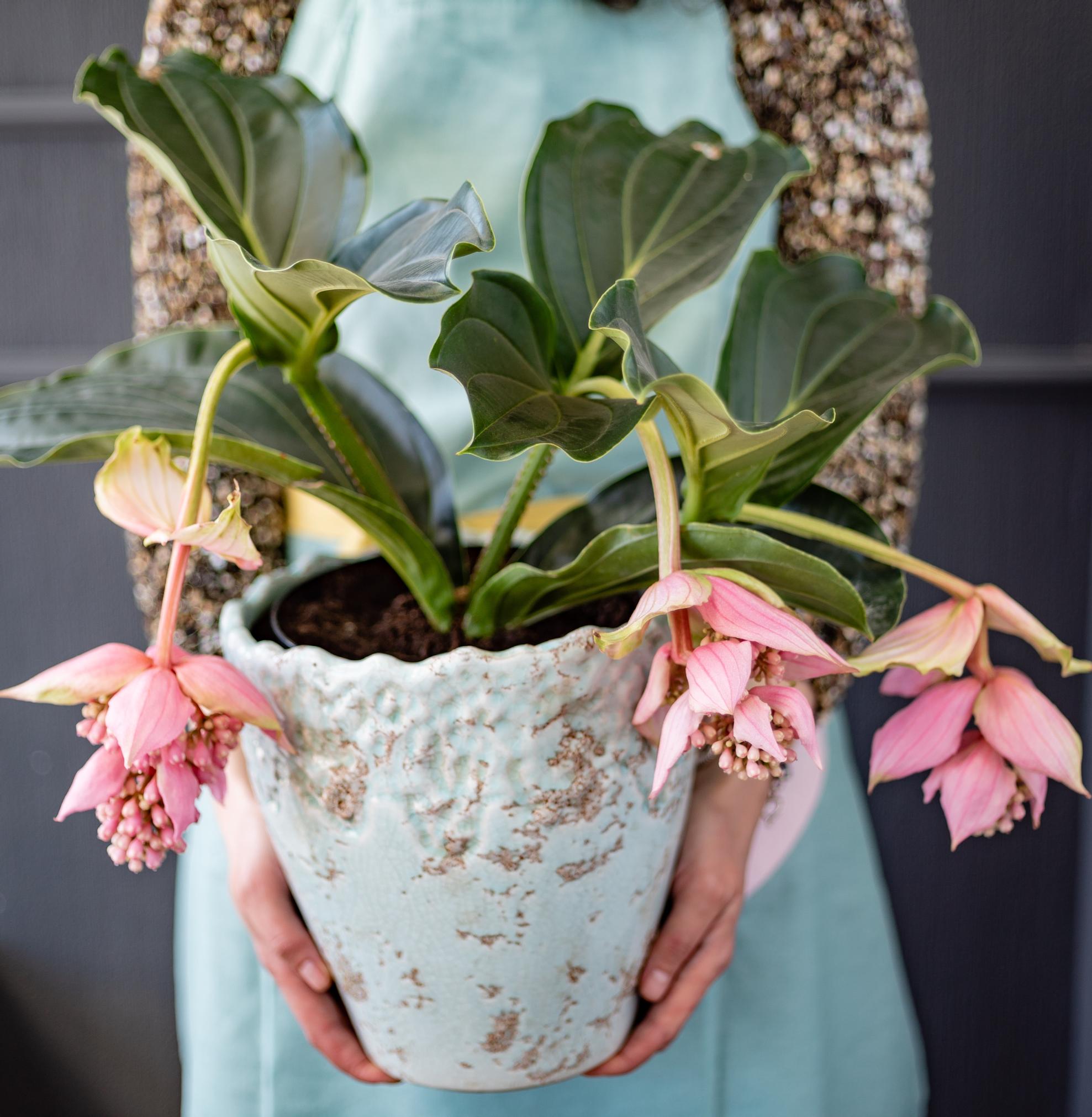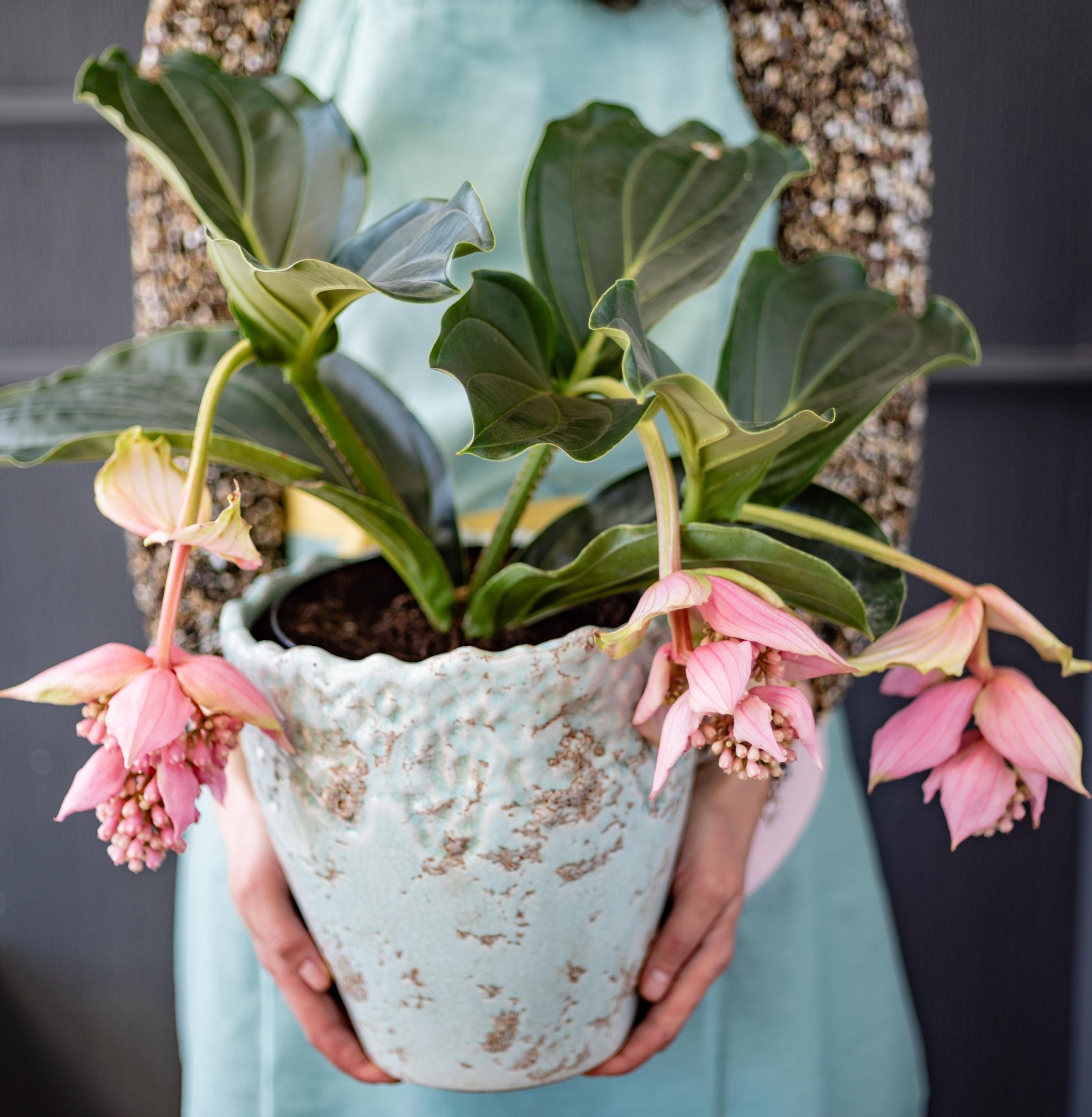
The majestic medinilla: a challenging but rewarding houseplant—try the pebble tray trick!
How on earth can you get a medinilla to flourish and bloom again? Botanist Visa Lipponen answers.
Visa Lipponen answers:
“The Medinilla genus is most commonly available as a houseplant only in the form of rose grape (M. magnifica) along with a few cultivars of apparently hybrid origin, such as Medinilla ‘RS 002’ and Medinilla ‘RS 010.’ The first is sold under the trade name J’Adore Dolce Vita, and the latter under the name Dolce Rossa.
Medinillas require high humidity and really only thrive in a greenhouse or a greenhouse cabinet. However, their large size makes it difficult to fit them into a greenhouse cabinet. The flower clusters form at the forks in the stems, and for a spectacular bloom, the plant needs multiple forks. The internodes are fairly long, and the leaves, which grow in pairs, can measure 20–30 centimeters, meaning even a young plant easily needs around 40 centimeters of space—more once the next pair of leaves appears.
Medinillas require ample light but do not tolerate direct sunlight.
In the dry indoor air of most homes, medinillas often drop their leaves, and new leaves may brown at the edges or turn black and fall off before reaching their full size. Diligent misting provides only fleeting relief and does not solve the underlying issue.
You can try to improve the conditions by using a humidifier or by placing the pot in a large tray containing a couple centimeters of pebbles or lightweight clay aggregate. Fill the tray with water up to the surface of the pebbles or aggregate, and the evaporating moisture will help raise humidity around the plant.
Medinillas require ample light but do not tolerate direct sunlight. They can grow in soil, but the best option is a bark-based mix, similar to what’s used for orchids, which retains moisture yet remains airy.
You can propagate medinillas from cuttings or from seeds produced by your own plant.
From spring through fall, allow the surface of the growing medium to dry slightly between waterings. In winter, medinillas enter a brief rest period, so let the medium dry a bit more. Despite their size, medinillas do better in relatively small pots, which also reduces the risk of overwatering.
If you manage to get a medinilla to thrive, it will produce flowers annually after its rest period. Buds typically appear in spring or by early summer at the latest.
You can propagate medinillas from cuttings or from seeds produced by your own plant. Cut the stem above a pair of leaves, dip the cut end in rooting hormone, and if you don’t have a greenhouse or a greenhouse cabinet, cover it with a large plastic bag during rooting. Seeds germinate readily on the surface of the medium under a plastic cover, though germination may take several weeks.”



